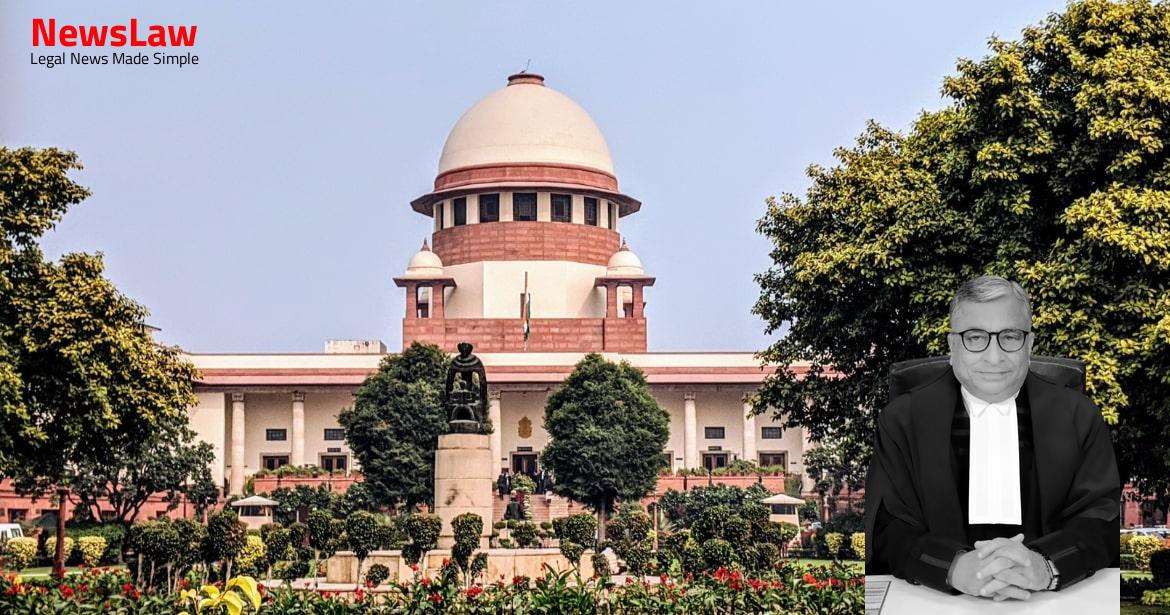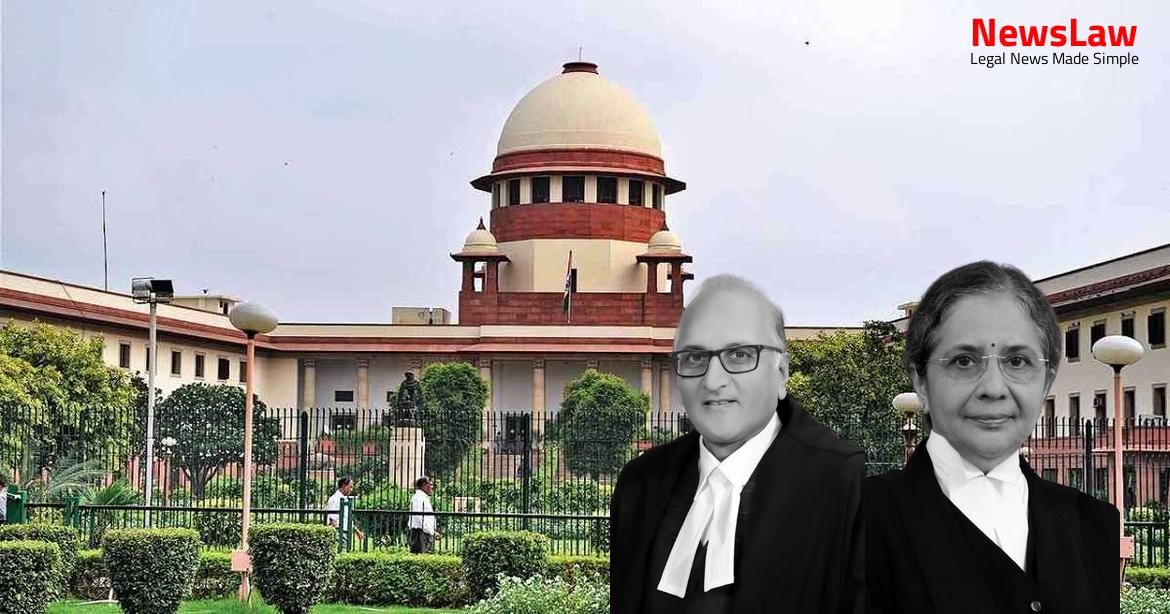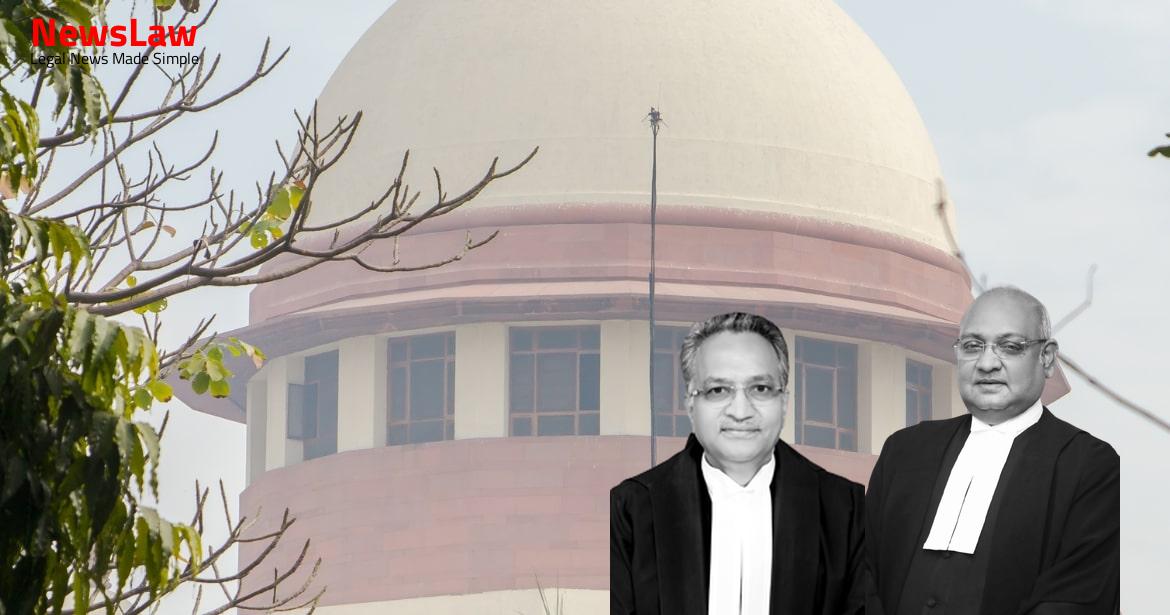The recent court case provides a detailed legal analysis of the distinction between capital and revenue expenditure in tax law. The discussion revolves around the treatment of grants in business operations, shedding light on the complex nature of tax regulations and their impact on corporate financial activities.
Arguments
- The representative of the appellant-Corporation criticized the High Court’s view on the argument that expenditure on monies advanced as loans does not permanently leave the Corporation’s hands, emphasizing that this point was irrelevant as the issue concerned grants and not loans.
- Grants disbursed under Section 9 of the NCDC Act were never returned to the appellant-Corporation, constituting expenditure for the Corporation.
- The grants were not in the form of loans, were used exclusively for the Corporation’s business, and should have been treated as revenue expenditure.
- Appellant argued that grants disbursed out of ‘Interest Income’ should be treated as revenue expenditure under Section 37(1) of the IT Act, 1961.
- Appellant contended that the grants, not loans, should be considered, and they do not result in enduring advantage or asset for the Corporation.
- Appellant relied on Atherton v. British Insulated and Helsby Cables Ltd. and Commissioner of Income Tax, Bombay v. Associated Cement Companies Ltd., Bombay to support their stance that a capital receipt may still be a revenue expenditure.
- Respondent’s counsel, Mr. Arijit Prasad, argued in favor of treating grants as capital expenditure.
- Appellant’s representative, Mr. Rajat Navet, pointed out that the High Court’s discussion on loans instead of grants was a mistake.
Also Read: Supreme Court Judgment on Single Till Mechanism for HRAB Calculation: A Comprehensive Analysis
Analysis
- New Zealand has an innovative status rulings system where taxpayers can apply to the Commissioner for a ruling on how changes in the law affect existing rulings.
- In the case discussed, the AO disallowed non-refundable grants as a deduction, considering them as capital expenses exempt from tax.
- The appellant-Corporation argued that the grants were for authorized business activities and should be deductible.
- The OECD lists advance rulings as a trade facilitation indicator.
- The appellant-Corporation’s lack of profit motive is not relevant as it is set up for specific purposes.
- The judgment in the Sitaldas Tirathdas case about personal obligations did not apply to this situation.
- The interest income should be taxable under the head of ‘Profits and Gains of Business or Profession’.
- The appellant-Corporation maintained funds for advancing loans and granting subsidies as per the National Cooperative Development Fund (Fund) under the NCDC Act.
- The expenditure incurred by the appellant-Corporation should be considered for deductions under Section 37 of the IT Act.
- A vibrant system of Advance Ruling can reduce tax litigation and improve tax compliance.
- The High Court’s decision regarding grants and loans was in favor of the Revenue Department, but the CIT(A) supported the appellant-Corporation’s stance.
- The interest income earned on funds is considered business income and should be tax under the ‘Profits and Gains of Business or Profession’.
- The High Court’s approach to grants and loans was considered fallacious, and it was decided that grants disbursed were allowable deductions.
- The appellant-Corporation’s process for institutional development of cooperatives and disbursement of funds was integral to its business operations.
- The issue of interest income being from loans and grants was disputed, but it was concluded that the interest income is taxable.
- The significance of the Advance Ruling System in reducing disputes and providing certainty in taxation matters was highlighted.
- The judgment in CIT Kerala, Ernakulam v. The Travancore Sugar & Chemicals Ltd. addressed the issue of whether the discharge of an obligation paid to the Government was the application of income or diversion of profits.
- Expenditures on revenue account are those that facilitate trading operations or enhance business effectiveness without impacting fixed capital.
- The Administrative Mechanism for Resolution of CPSEs Disputes was introduced to replace Permanent Machinery of Arbitration for equitable dispute resolution.
- The interest income merged with monies in the common Fund loses its revenue character and becomes a capital receipt.
- Grants given to State Governments and national cooperatives are considered application of income and not expenditure within the course of trade.
- The decision in Poona Electric Supply Co. Ltd. v. CIT Bombay City emphasized that income tax is based on real income.
- Disputes within the NCDC Act funding process are ideally resolved at two tiers within specific time frames.
- Bureaucrats hesitancy in decision-making for fear of post-retirement consequences hampers effective dispute resolution.
- A Committee of legal experts chaired by a retired Judge may enhance dispute settlement efficiency and reduce apprehensions.
- Mediation has been proven effective in many countries as a remedy for dispute resolution post-COVID.
- Payments may be considered revenue or capital based on the perspective of the payer and receiver.
- Challenges to advance rulings can be initially made to the High Court, then to the Supreme Court for resolution.
- The distribution of income is considered as the application of income.
- The judgment in Commissioner of Income Tax, Bombay v. Associated Cements Companies Ltd. cited Viscount Cave’s dictum in Atherton v. British Insulated and Helsby Cables Ltd.
- The High Court erred in losing the revenue character of interest income when amalgamated with the Fund under the NCDC Act.
- The judgment in The Sole Trustee, Lok Shikshana Trust v. The Commissioner of Income Tax, Mysore supports the view of capital receipts for loans and grants.
- Determination of real income requires setting off permissible expenses.
- The gross receipts cannot be solely taxed without considering permissible expenses for real income.
- Certification cases categorized as wastage of judicial time exist to obtain a dismissal certificate from the highest court.
- The Government versus Government matters affect the judicial system efficiency and public exchequer and need strategic handling.
- Real profits determined on commercial principles differ from profits fixed by statute, as seen in Union of India & Ors. v. Pirthwi Singh & Ors.
- Deductions for real profits differ from distributions made after ascertaining profits.
- The Finance Act of 2003 added a provision in Section 36 of the IT Act allowing deductions for certain expenditures incurred by corporations established by government acts.
- Expenditures must be incurred for the authorized objects and purposes of the corporation as per the act under which it is established.
- Section 37 of the Act allows for the deduction of expenditure laid out exclusively for the purposes of the business or profession.
- The disbursement of grants has been deemed the core business of the appellant-Corporation.
Case Title: NATIONAL CO-OPERATIVE DEVELOPMENT CORPORATION Vs. COMMISSIONER OF INCOME TAX-V, DELHI (2020 INSC 544)
Case Number: C.A. No.-005105-005105 / 2009



